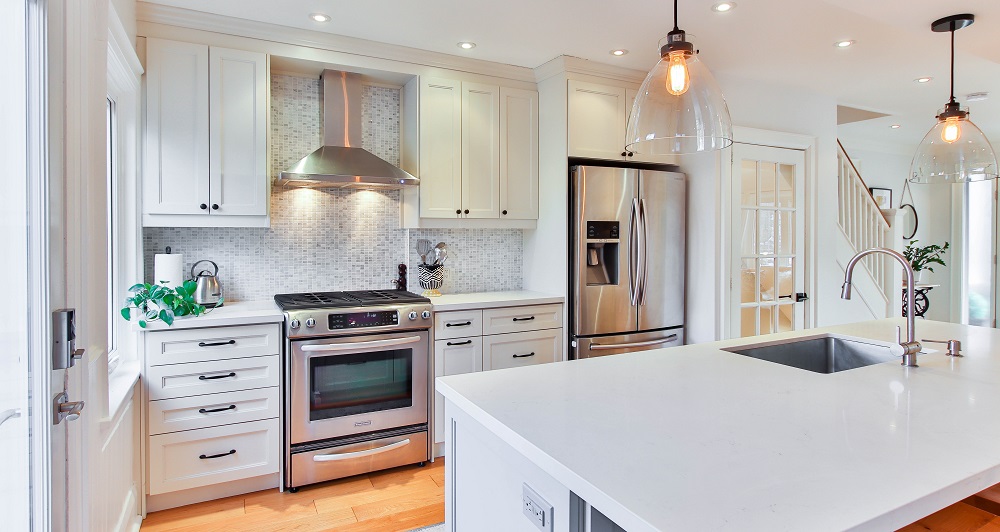Sustainability is a buzzword among consumers across the globe, reports IBM, with consumers “increasingly embracing social causes and seeking products and brands that align with their values.” The penchant for eco-friendly products is far-reaching and covers kitchen and home design as much as it does food products, fashion, and other realms. If you are currently renovating your kitchen or designing a new one from scratch, how can you ensure it reflects the value of sustainability in your life?
Building Your Kitchen in Eco-Friendly Materials
For everything from flooring to splashbacks, ‘green’ choices can be made that follow the latest design trends while also helping you make a difference. For your flooring, consider materials such as Forest Stewardship Council-approved wooden floors (which guarantee that the wood is harvested sustainably), salvaged wood floors (obtained from old homes or buildings), or linoleum made from natural materials (including linseed oil, which boasts anti-microbial properties). Cork, rubber, and concrete are also considered environmentally friendly. When choosing materials for central islands and countertops, support brands that use renewable energy and use recycled materials to manufacture their collections or choose inherently sustainable materials such as bamboo. For splashbacks, materials such as cork, recycled clay tile, or reclaimed wood tiles may do the trick.

Saving Energy in the Kitchen
The kitchen is one of the home’s most energy-consuming spaces, with equipment such as dishwashers, ovens, hobs, hoods, microwaves, hand blenders, and more consuming energy on an almost daily basis. One of the main tenets of green home design is focused on energy savings and the use of renewable energy sources. When purchasing new ovens, fridges, and other key items, watch out for those bearing recognized ratings such as Energy Star and WaterSense.
If you are using cooling in your kitchen during warmer months or heating during the cooler season, make sure your kitchen is well insulated so that air leaks don’t cause you to rely excessively on air conditioning or heating. Keep in mind that the cost to replace your furnace or air conditioner with a more energy-efficient unit will be recouped from the saving in the long term. Consider installing solar panels on your roof to generate the power you need to prepare magnificent meals without worrying about the electricity you are consuming. You can save up to $100 every month on your electricity costs by going solar.
Opting for Eco-Friendly Materials for Smaller Items
When buying items such as kitchen décor, chopping boards, bowl covers and the like, thinking before you shop can help lower your carbon footprint significantly. For instance, instead of using aluminium foil or plastic wrap to cover food before placing it in the fridge, consider reusable bowl covers (made of fabric with elastic edges) by companies like Wegreeco. For wooden items and décor, pick items made of reclaimed wood. Instead of paper towels, choose reusable kitchen towels. The latter can be used to clean up as well as to wrap foods such as bread instead of plastic. Instead of using plastic bags for foods like sandwiches, rely on silicone food bags, which are reusable.
To design an eco-friendly kitchen, plan everything from your flooring to tiny décor details with your carbon footprint in mind. Invest in energy-efficient equipment and, if possible, consider solar panels for your energy needs. Finally, choose materials that are recycled or fast-growing such as recycled wood and bamboo, which look good and sturdy enough to handle even the busiest family of cooks.